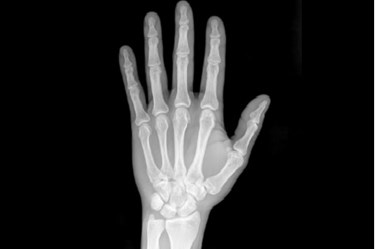5 Tips For Optimizing X-Ray Inspection Systems
By Melissa Lind, contributing writer

X-Ray systems may be the most versatile contaminant detection systems in terms of implementation into food-processing lines and variety of objects able to be detected. However, your company many not be getting all that it can out of its investment.
With any contaminant-detection system, avoiding down-time and maximizing productivity will make a difference in how your company’s capital investment pays off. Even though it is fairly well-known that X-Ray systems are quite versatile, there are five important areas for consideration to ensure that your company is getting the most out of its X-Ray equipment.
Food X-Ray Inspection Equipment: What You Should Know
Equipment Hygiene
It may seem obvious, but cleanliness is a factor. The consumer relies on excellent hygiene in the food-processing line, but the process isn’t just about the product. Contaminated equipment — from conveyers to the X-Ray equipment itself — makes a big difference in how well a line performs. The good news is that modern X-Ray systems are fairly easy to clean. Most systems are capable of withstanding even the harshest chemical wash-downs and many are constructed with welded, stainless steel that eliminates debris collection. Looking at ease of cleaning may be an important asset if your company is considering a new purchase.
Hitting The Right Target
To make the most of your X-Ray inspection system, knowing what contaminants to look for and where they are most-likely to occur is essential in order to implement the technology. Issues such as inspection angle and optimal energy output can be determined by your company’s physical system. Understanding what the machine can do for your company is a key component of utilizing the technology to its full range. X-Ray inspection systems are great for contamination detection, but they can also ensure correct count, improper placement, inadequate seals, and malformation of food products.
Consistency
While every food system runs better under ideal conditions — perfect product placement, consistent line speed, and a lack of rejects. However, the real-world application is rarely ideal. The good news is that most X-Ray inspection systems are highly adaptable with regards to speed, spacing, and even shape. X-Ray systems can handle different product types and package shapes, with many able to accommodate multiple lines. In addition, some equipment allows for upgrades which can be implemented later as your company’s needs expand.
Regular Checks
Regular maintenance checks can help prevent problems before they occur. Many product-inspection equipment manufacturers offer maintenance agreements. While this might not be a great investment for a home television, it is worth considering for industrial equipment. Aside from ensuring continuing operation, regular performance testing is essential to meet many regulatory and safety requirements. If a recall is needed, your company will have documented defense and be able to show due diligence in efforts for food-safety precautions.
X-Ray Detection Takes On New Food Safety Regulations
Warranties And Parts
Like most machines, certain components of X-Ray systems can wear out or lose function over time. Your company needs to know where to go or who to call for spare parts to keep your line running. Extended warranties may cover this and maintenance agreements can prevent issues. Many suppliers have in-tock supplies of the parts that most commonly need replacement. However, it will never hurt knowing where to turn in case of an emergency. Some manufacturers even offer ready-made kits for spare parts that can be kept on hand to avoid line stoppage.
